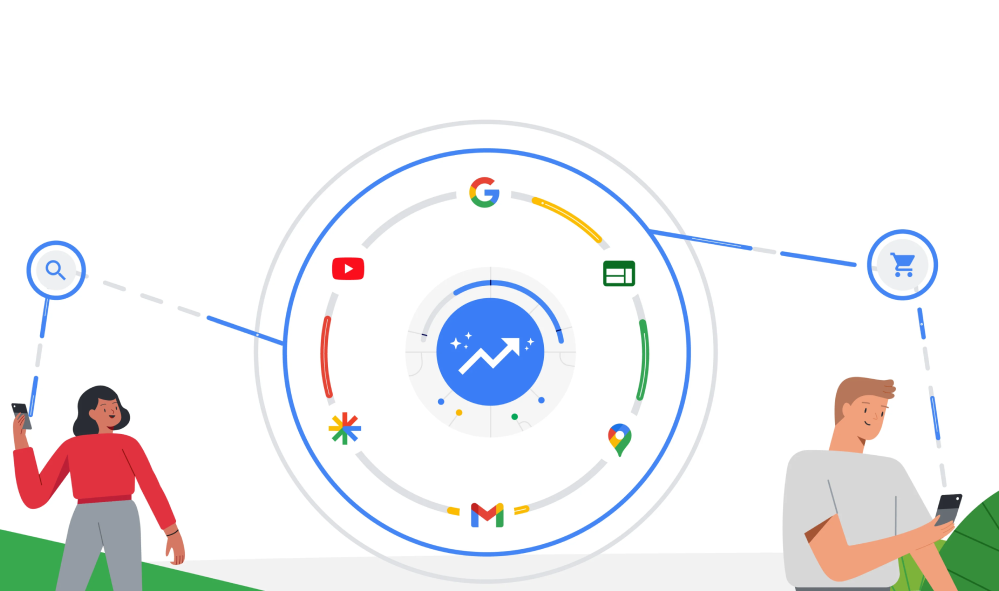Google Defines New Rules for Shopping Auction Dynamics

Q4 is off to an exciting start with Google introducing a fundamental shift in how Performance Max and Standard Shopping campaigns battle for attention within the ad auction. This promises to bring greater balance and transparency to the auction process, while demanding a more nuanced approach to campaign management. (image source: Google)
Performance Max No Longer Prioritized Over Standard Shopping
Historically, PMax campaigns have enjoyed preferential treatment, often outranking Standard Shopping campaigns in the ad auction hierarchy. This created an uneven playing field for advertisers relying on Standard Shopping campaigns.
As of October 2024, Google will gradually release an update to level the auction priority playing field between Standard Shopping and Performance Max campaigns targeting the same product.
Ad Rank and Product Prioritization is the New Deciding Factor
The ad with the highest Ad Rank will be the one displayed, regardless of whether it originates from a PMax or Standard Shopping campaign.
Google calculates the Ad Rank for each eligible product in real time to determine the position in the search results. Ad Rank is influenced by several factors:
- Bid: The maximum amount you’re willing to pay for a click on your ad.
- Data quality: How complete and accurate your product data is (titles, descriptions, GTINs, images, etc.)
- Product relevance: How closely your product data matches the user’s search query.
- Predicted click-through rate (CTR): Google’s estimate of how likely someone is to click on your ad based on historical performance and feed optimization.
- Cost: When a user clicks on your ad, you pay a cost-per-click (CPC). The actual CPC is often less than your maximum bid and is influenced by the Ad Rank of the product below yours in the auction.
New Auction Rules, New Shopping Strategy. Google advertisers must be proactive and adaptable. Here’s a roadmap to guide your efforts:

(image source: Google)
Optimize Budgets and Targeting
Revisit your budgets and targeting settings across all campaigns to ensure they’re aligned with the new auction dynamics. A granular approach to budget allocation and audience targeting will be essential.
Refine Performance Max Capabilities
- Final URL Expansion & Page Feeds:
- Expand your URL coverage to capture a wider range of relevant search queries.
- For product feed campaigns, ensure you are targeting relevant SKUs in your product listing.
- For non product feed campaigns, use a page feed strategy, or page targets and exclusions to better refine dynamic landing pages.
- Strategic Asset Grouping & Compelling Creative:
- Organize your assets into cohesive and relevant groups to enhance ad relevance and quality.
- As Standard Shopping becomes more viable, the creative aspects of Performance Max may start serving more than they have previously.
- Utilize high-quality creatives and engaging videos to capture user attention and drive conversions.
Potential Strategies With Shopping and PMax
These new strategies let you combine the automation of Performance Max with the control of Standard Shopping. Consider new structures like:
- Non-Brand Performance Max for lower performing SKUs with Standard Shopping focusing on top converting products for budget allocation considerations.
- Brand Performance Max and non-brand Standard Shopping. This was not easily done before; however, these new rules pave the way to structure your account this way.
- New Customer Acquisition Performance Max with Standard Shopping with brand, remarketing, and retention layers. This captures users already in the funnel for a more efficient ROAS when they search product keywords, leveraging PMax of discovery.
There are certainly more advanced, and far more specific structures you can test with these new rules.
Google’s Continued AI-Driven Evolution
Being able to leverage both Standard Shopping and Performance Max more easily means more advertisers will be willing to run both side-by-side, and not have to take such an aggressive approach to choosing a shopping inventory solution.
Adapt your strategies, and leverage the new auction dynamics to your advantage. With careful planning, meticulous optimization, and a willingness to run both, you can navigate this new era of Google Ads and scale shopping inventory like Smart Shopping was still around.
